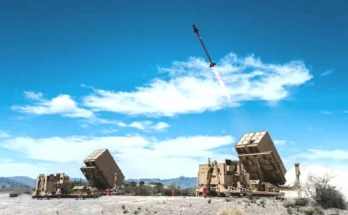by Larry Dickerson, Unmanned Vehicles Analyst, Forecast International.
Despite all the talk about commercial unmanned air vehicles (UAVs), the unmanned aircraft system (UAS) market remains dominated by military customers. Although overall production is falling, the value of this market continues to grow.
The UAS market has seen a remarkable transformation over the last 12 years. This radical change occurred in the wake of the 9/11 terrorist attacks and the subsequent global war on terror launched by the United States and its allies.
Operation Enduring Freedom (OEF) began on October 7, 2001. Even before the first U.S. soldier set foot in the country, UAVs were in operation over Afghanistan. Long viewed as useful assets for collecting intelligence, UAVs quickly became an indispensable element of U.S. military operations. In some cases, UAVs became combatants, firing air-to-surface missiles at targets of opportunity.
The fighting in Iraq brought the first wide-scale use of man-portable unmanned air vehicles. Platoon and company-level commanders use these systems to provide soldiers with better situational awareness.
The U.S.-led invasion of Iraq, as well as military operations in Afghanistan, helped raise the profile of UAVs to heights undreamed of just a few years ago. Around the world, planned funding for UAVs has skyrocketed since 2001.
In the immediate future, U.S. companies will be the leading providers of UAVs to the world. U.S. companies can attribute their dominance to the Pentagon’s high demand for UAVs and to the availability of financial resources to pursue multiple programs.
| Company | % Share | Main System |
| Northrop Grumman | 19.64 | Global Hawk |
| General Atomics | 11.75 | Reaper |
| AAI | 2.05 | Shadow |
| IAI | 2.96 | Heron |
| Boeing | 1.42 | ScanEagle |
| All Others | 62.18 | |
| (Source: Forecast International) |
Europe is just as determined as the United States to expand its UAV fleet, although the continent’s financial resources are more limited.
France, the U.K., Germany, Spain, the Netherlands, Italy, and Greece all plan to place new UAV production orders over the next 10 years. Some of these UAVs will deploy from naval surface combatants. European companies are trying to convince their national governments to launch joint programs.
| % Market Share by Nationality | |
| U.S. Firms | 35.07 |
| Israeli Firms | 4.22 |
| European Firms | 3.38 |
| All Others | 57.33 |
| (Source: Forecast International) | |
Israel has long been at the forefront in deploying UAV systems and is very dependent on foreign orders to keep its production line profitable. Israeli firms are aggressively marketing their UAVs around the world and looking to form alliances to assist these efforts.
Elsewhere, Japan, China, South Korea, India, Malaysia, Pakistan, Singapore, Taiwan, and Indonesia, to name a few, are also looking to expand their UAV fleets. A growing number of countries are also investing in the domestic development of UAVs.
The market for unmanned air vehicles will be worth an estimated $39 billion over the next 10 years. This figure includes production of all air vehicles, ground control equipment, and payloads through 2024. Research and development will account for a further $28.88 billion in spending, and perhaps another $2 billion to $3 billion will go toward UAV service contracts. This equates to a total market value of $70.88 billion.
During this period, this market will experience a steady increase in value annually, even as the number of air vehicles built declines. The U.S. market will experience a cooling and eventually settle at a lower level of activity – but one that is still far higher than it was prior to 2001. The market will also see a growing number of UAVs entering production in countries outside of North America, Europe, and Israel.
As the years and decades pass, militaries around the world will introduce increasingly sophisticated robotic systems. Eventually, it will be unheard of for a fighter squadron to go into combat without a number of accompanying, or preceding, unmanned air vehicles.
Robotic proxies will not fight the wars of the 21st century like some vast technological video game; rather, robotics in the form of unmanned aerial and land- and sea-based systems will play an increasingly important role. These systems are another tool for use by troops aiming to complete their missions.
Robotic systems will never replace human troops or manned systems but will help increase chances for survival.
For 50 years, Forecast International intelligence reports have been the aerospace and defense industry standard for accurate research, analysis, and projections. Our experienced analysts compile, evaluate, and present accurate data for decision makers. FI's market research reports offer concise analysis of individual programs and identify market opportunities. Each report includes a program overview, detailed statistics, recent developments and a competitive analysis, culminating in production forecasts spanning 10 or 15 years. Let our market intelligence reports be a key part of reducing uncertainties and mastering your specific market and its growth potential. Find out more at www.forecastinternational.com




